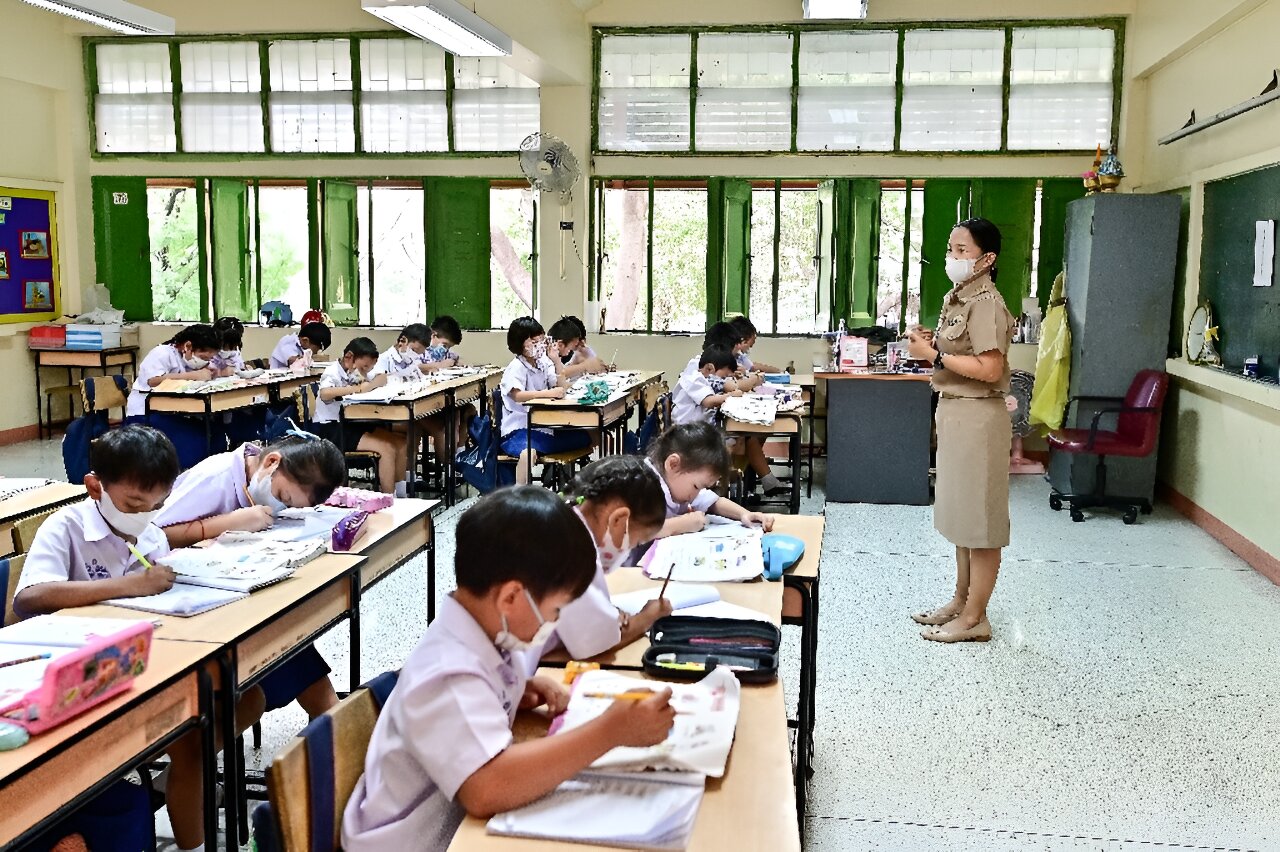
Hundreds of Thai children strain to sing the national anthem, reedy voices and fragile lungs competing against eight lanes of belching traffic next to their school’s open atrium in central Bangkok.
Pupils at Suan Lumphini School assemble each morning under a colored flag indicating the day’s air quality—red for worst, yellow for second worst, blue for best.
Thailand registers dire air pollution levels annually—its cities topping the world’s most polluted for days last year—and children face the greatest risk of long-term damage to their respiratory systems.
Lalipthat Prakham, who works as a maid, said it has already made her eight-year-old daughter sick.
“I always try to make her wear a mask. I tell her to keep the mask on at all times and to avoid going outside,” she told AFP while waiting for her child outside Suan Lumphini.
Not all children suffer equally.
Bangkok’s elite private international schools enjoy air purifiers and filtration systems in classrooms, but public establishments like Suan Lumphini must do without them.
Children are at higher risk from air pollution due to several factors, according to Teerachai Amnuaylojaroen from the University of Phayao’s School of Energy and Environment.
Not only are their still-developing bodies more susceptible to damage, but they also breathe faster than adults—inhaling “more pollutants”, he said.
The World Health Organization warns that as well as damaging children’s respiratory systems, air pollution also puts them at higher risk of cancer and can stunt the development of their brains.